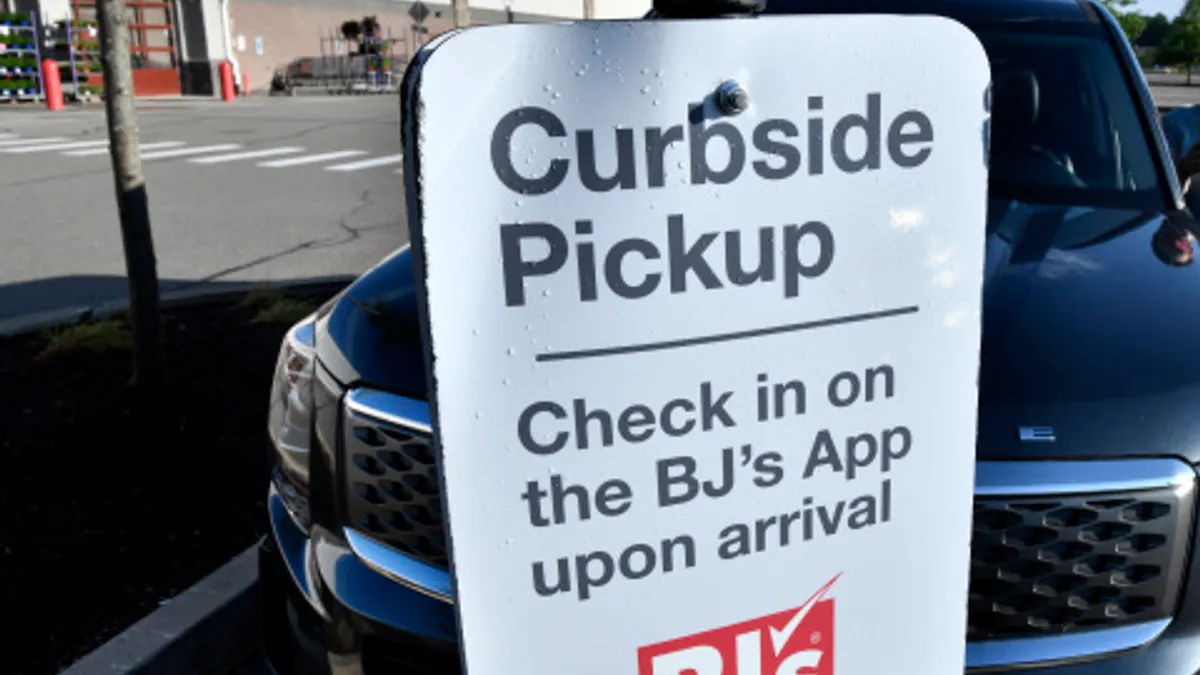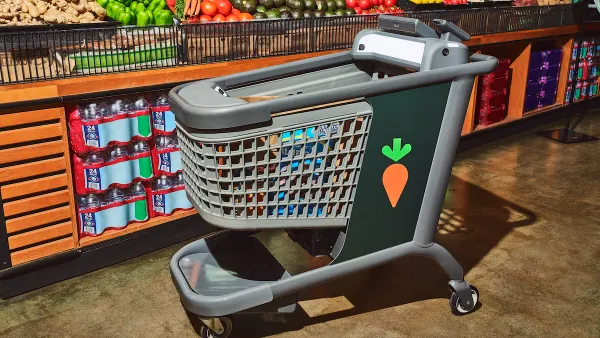Dive Brief:
- Grocery e-commerce sales rose 1.8% year-over-year in January, to $8.5 billion, as more households bought groceries online even as order frequency declined, according to data released Monday by Brick Meets Click and Mercatus.
- Pickup accounted for 47.3% of online grocery sales last month, while delivery claimed 35.3% of the market and the ship-to-home segment garnered a 17.4% share.
- Supermarkets continued to lose ground online in January to mass retailers, highlighting the pressure merchants like Walmart are placing on traditional grocers in the competition for digital shoppers.
Dive Insight:
The grocery e-commerce trends that unfolded last month paint an uneven portrait of the online grocery space. Shoppers spent an average of almost 2% less per pickup order than they did during the same period in 2023, but the value of the average delivery order rose 3%.
Pickup and delivery each saw shoppers place fewer orders in January, dragging down both fulfillment channels’ share of the grocery e-commerce space. Meanwhile, the ship-to-home channel, which includes grocery orders handled by carriers like FedEx and UPS as well as Amazon’s online grocery business, grabbed a larger portion of the market compared with the same period last year.
Mass retailers, led by Walmart, expanded their base of monthly active users by almost 10% and also recorded higher average order values. Supermarkets, by contrast, recorded a decline in that metric of more than 5%.
The research also found that 29% of shoppers who bought groceries online from a traditional supermarket used an e-commerce service run by a mass retailer as well.
Sales data from 210 Analytics and Circana also shows that grocery shoppers are shifting dollars toward mass merchants.
The ongoing shifts in how people are allocating the money they earmark for online grocery purchases reflect the financial headwinds shoppers are continuing to face, Brick Meets Click partner David Bishop said in a statement about the firm’s research.
“When more than 10% of U.S. households have less money to spend on groceries this year than they did last year, changes in buying behavior are certainly expected,” Bishop said. “The reduction in SNAP payments that took effect at the end of February 2023 is one of the factors driving the flight-to-value trend which we’ve observed and tracked since mid-2023.”
The findings reflect a survey Brick Meets Click conducted of 1,745 adults on Jan. 30 and Jan. 31.














